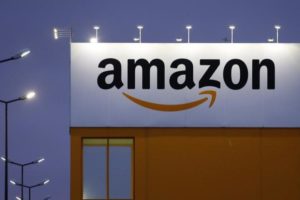
People who really know about hair coloring are likely to be familiar with Madison Reed, a brand that is known to carefully choose its market presence as well as the distribution of its products. Madison Reed can only be found at upscale beauty retailers such as Sephora and Ulta. A few years ago, the brand negotiated an agreement with QVC and would later open its very own chain of “beauty bars” for women who wanted a quick hair color change along with styling. This choice of exclusive catalog placement and distribution is the reason why the brand was surprised to discover its products being sold on the Amazon Marketplace.
It did not take long for Madison Reed to figure out that professional hair salons were likely behind the unauthorized third-party sales of its products on Amazon. Oddly enough, the discovery by Madison Reed took place at a time when Amazon was enticing major beauty brands to list their products by means of exclusive agreements. In other words, Amazon wants to compete directly against Sephora, which happens to be one of Madison Reed’s exclusive distributors.
Madison Reed is hardly the only company to learn that its exclusive branding and distribution efforts were somehow breached on Amazon. We are not talking about an eBay seller listing one or two bottles of hair coloring, such an action would be fair under the first-sale doctrine. We are talking about boxes of products being diverted from a company that seeks to carefully control branding and distribution.
Amazon Brand Gating and Brand Protection
With more than half of all products sold by Amazon coming from third-party sellers, the Brand Gating program is a welcome initiative that was long overdue for business owners who wish to exert full control over marketing, pricing and distribution of their products.
Brand Gating started off as a partnership between Nike and Amazon. The world’s largest online retailer was particularly interested in convincing the world’s number one brand of sporting goods to list its products on its marketplace, but Nike was adamant about doing so due to a large number of counterfeiters and unauthorized sellers operating on Amazon. Nike demanded exclusive control over its catalog and the ability to monitor the marketplace so that rogue sellers could be handled appropriately.
Amazon agreed to the aforementioned terms by letting Nike determine who could access product listings, thus creating the first instance of the Brand Gating program. Nike has full control of all the Amazon Standard Identification Numbers (ASINs) assigned to its running shoes, athletic apparel and accessories; no one else can list these ASINs or modify the product listings. What Nike demanded is in line with the strict brand protection strategy of the company.
The Virtual Fences of Brand Gating
Once an Amazon seller is approved for Brand Gating, all ASINs created by that merchant are locked behind a virtual fence that only authorized parties can enter; this means that a locked ASIN will not display the “I Want to Sell This Product” button near the Buy Box, or else it will inform third-party sellers about the Brand Gating program.
Major brands such as Nike can get easily approved for Brand Gating, but this is not the case for modest brands, manufacturers and white label distributors; for this reason, active monitoring of ASINs is crucial for brand protection. With Brandlox, your ASINs are constantly watched and you are immediately notified when a rogue seller or counterfeiter is making a move on your Amazon products.
Learn more about Brand Gating and brand protection by contacting a Brandlox e-commerce consultant; the success of your exclusive brand on Amazon may depend on ASIN monitoring. Call 1-866-848-6072.
